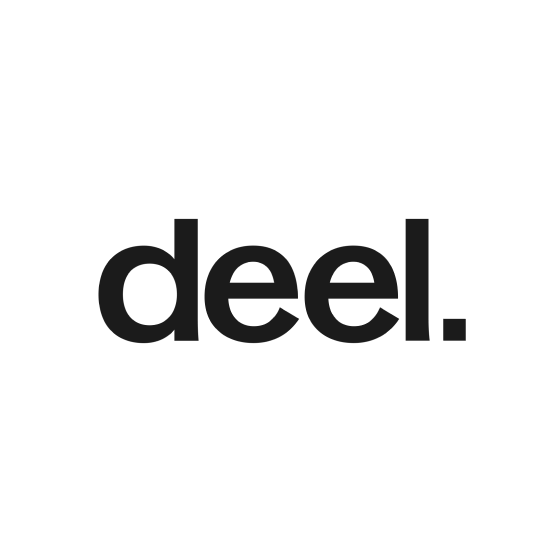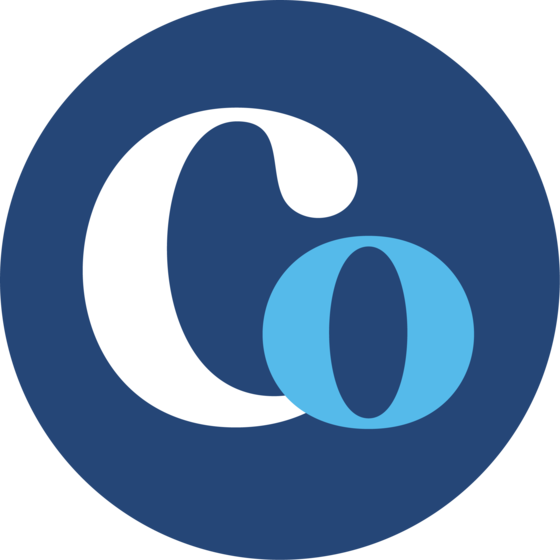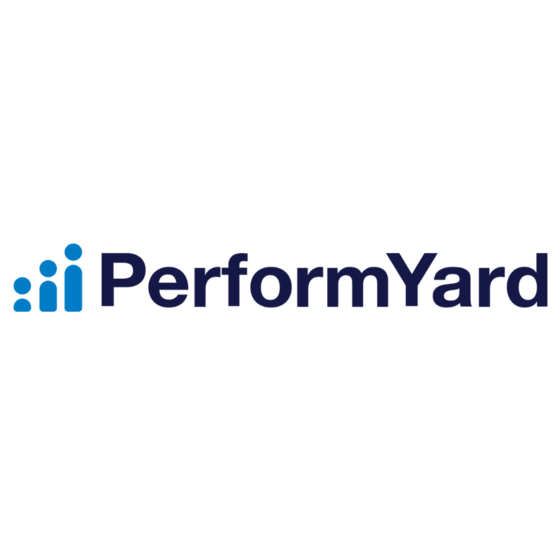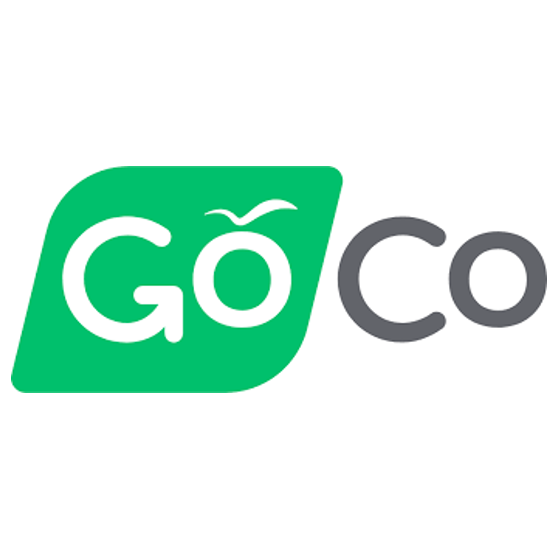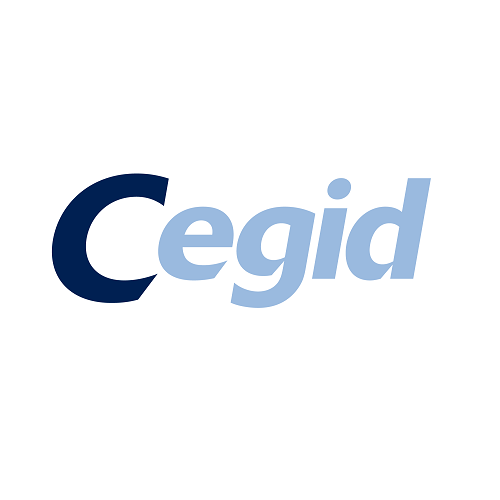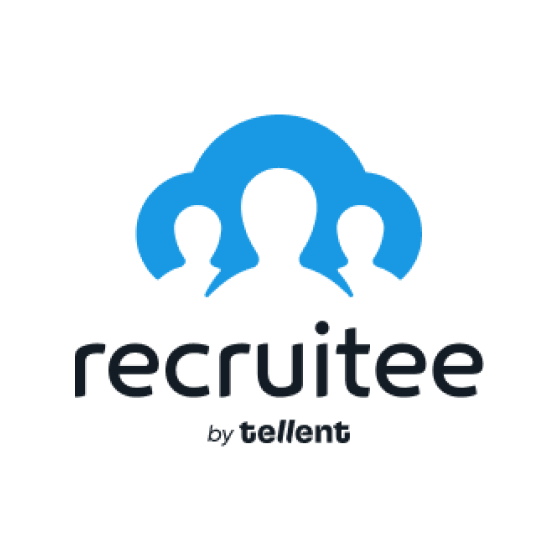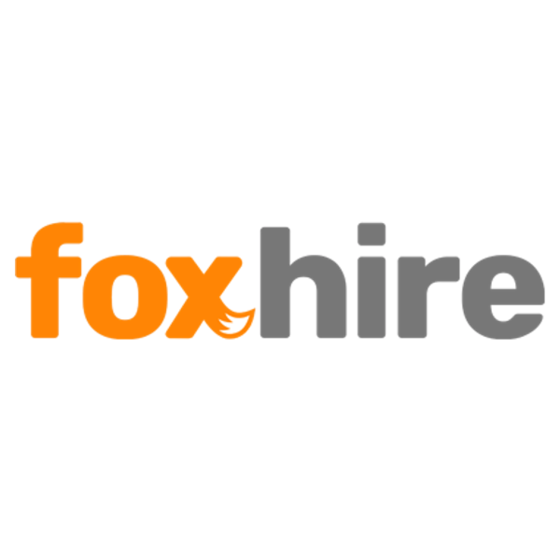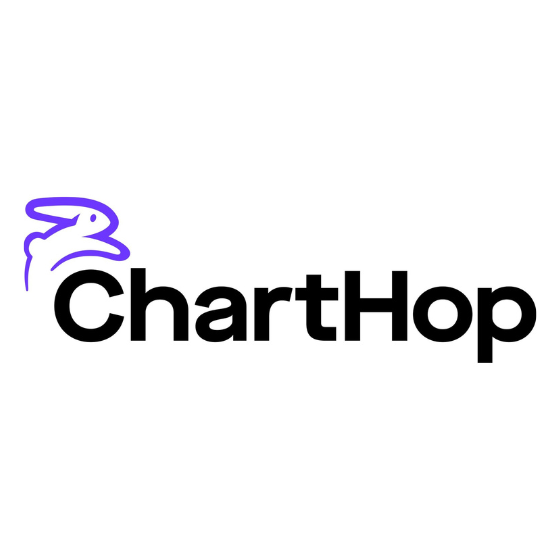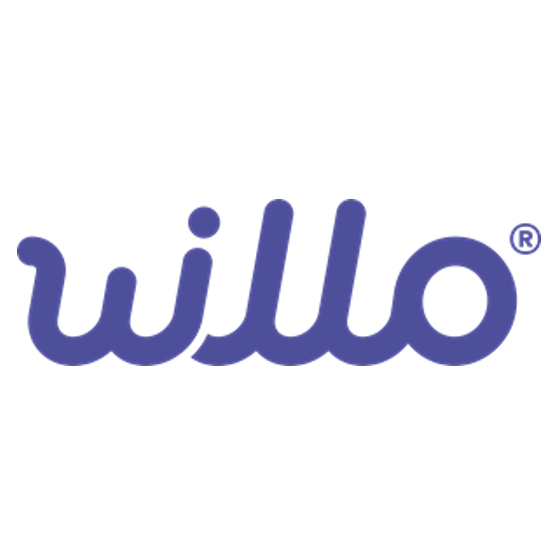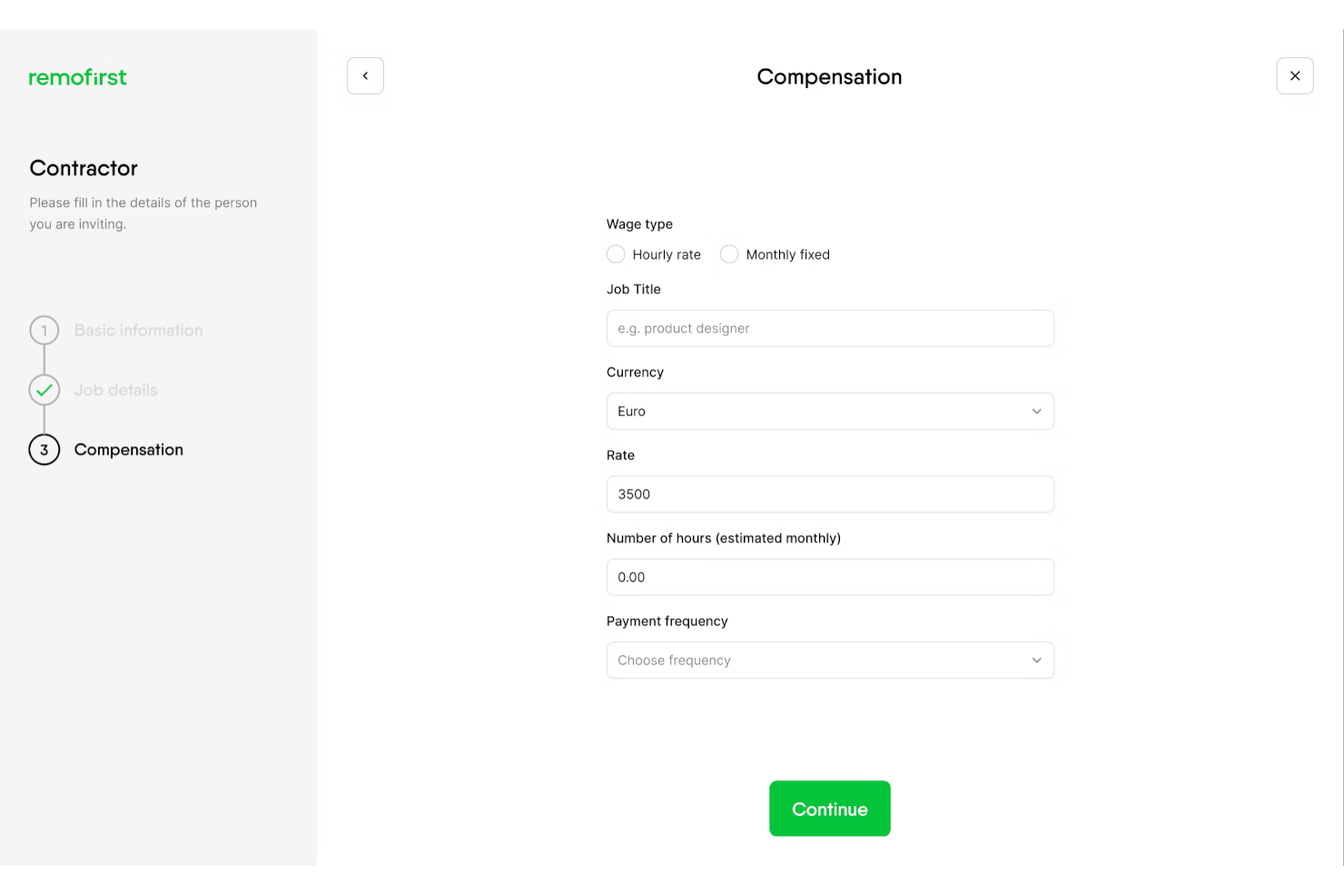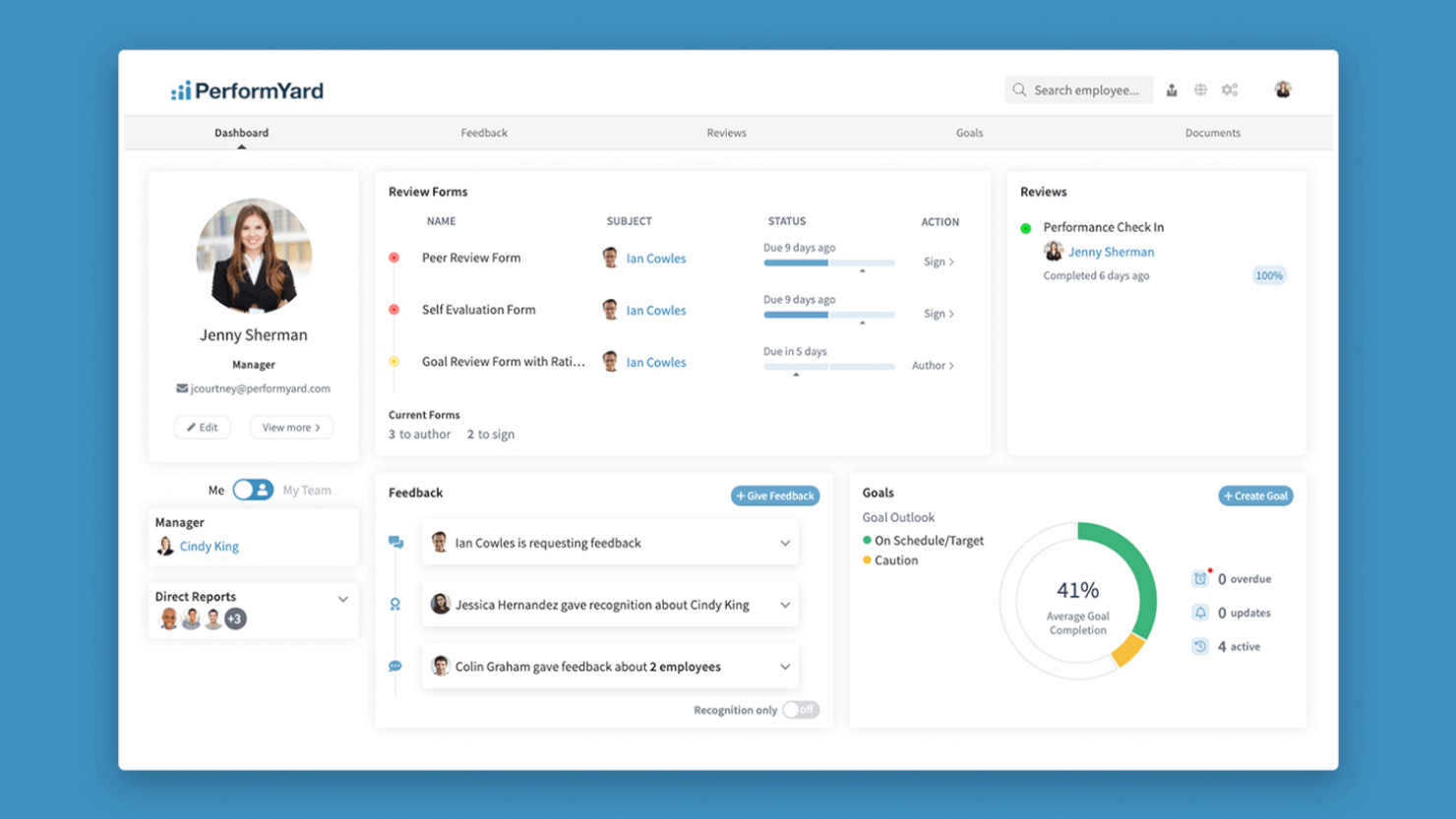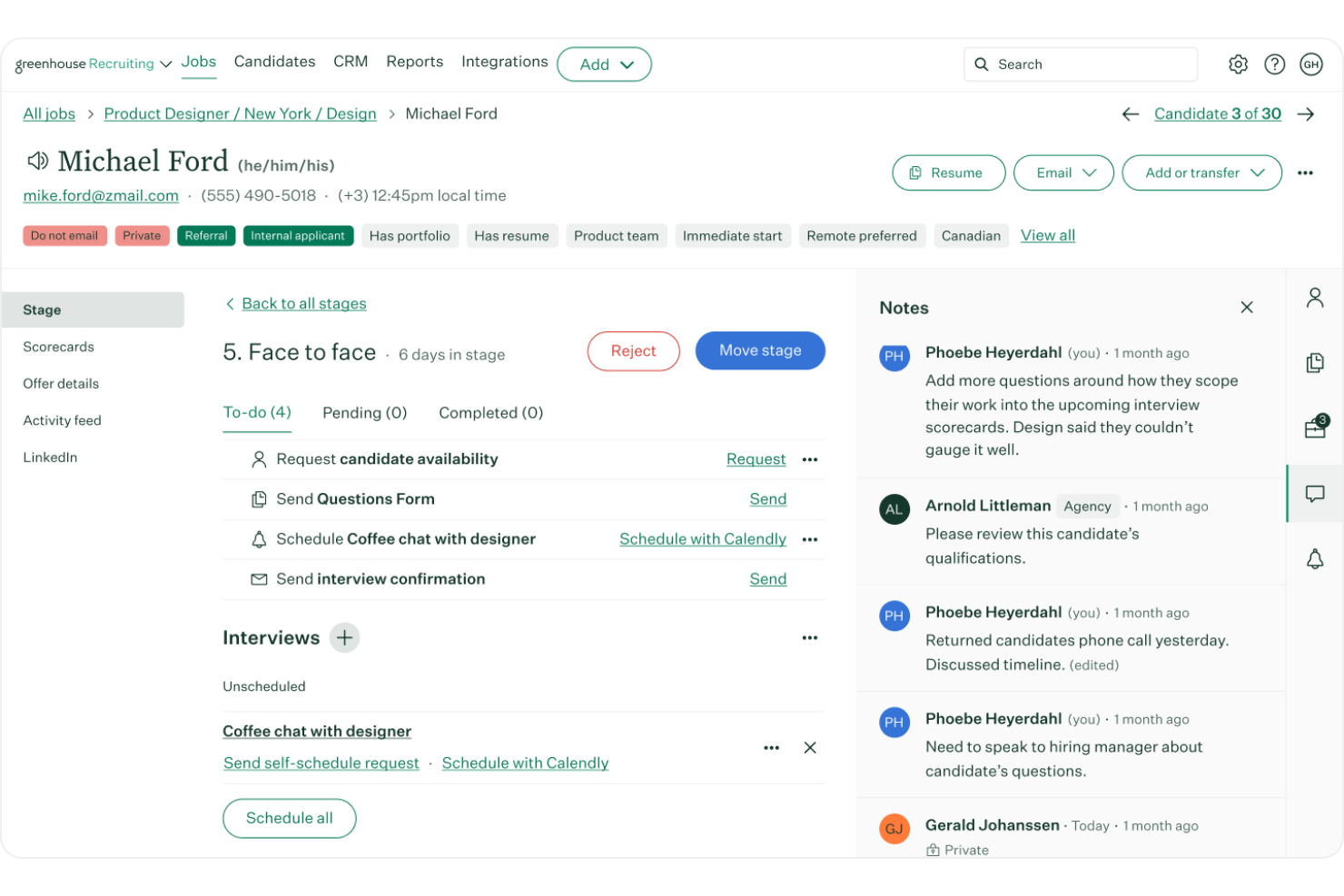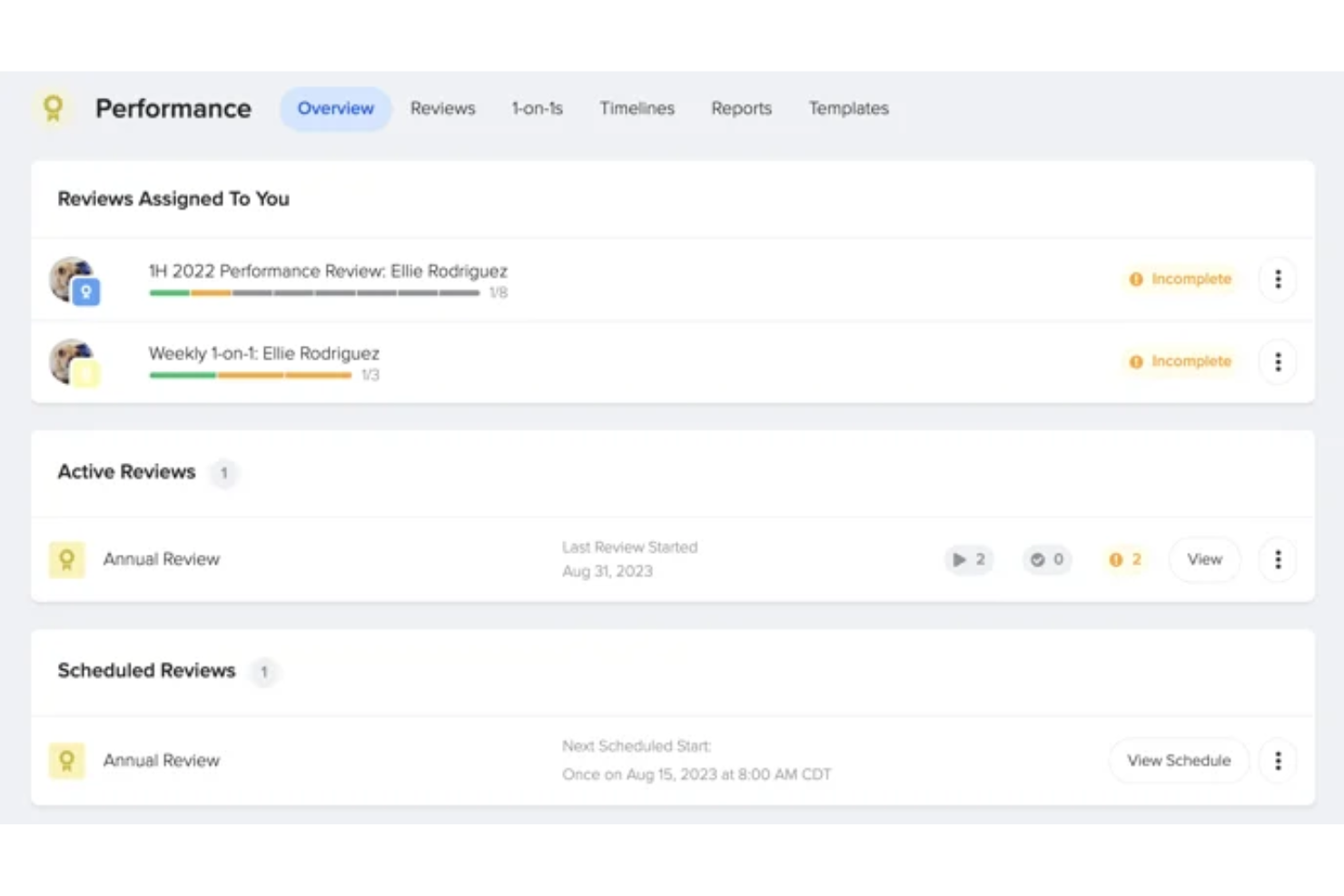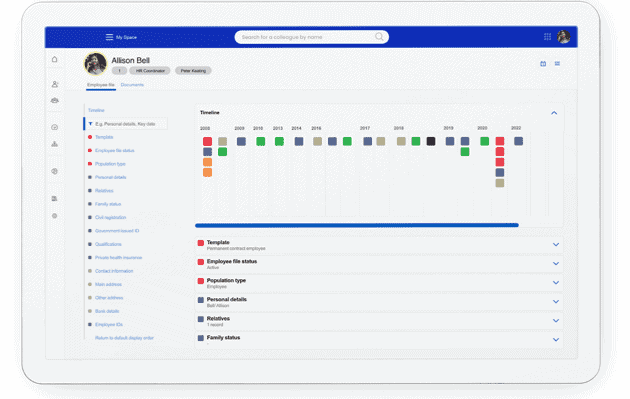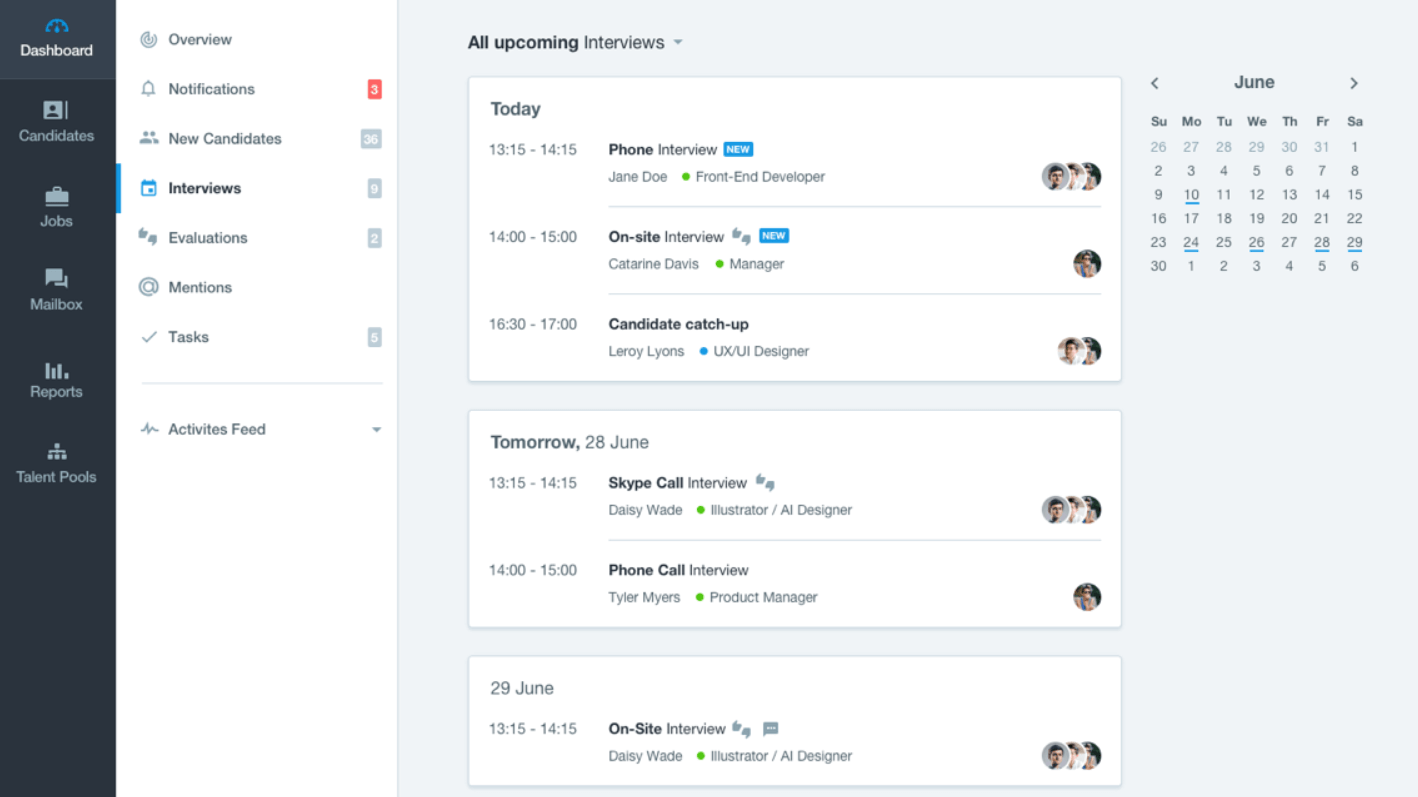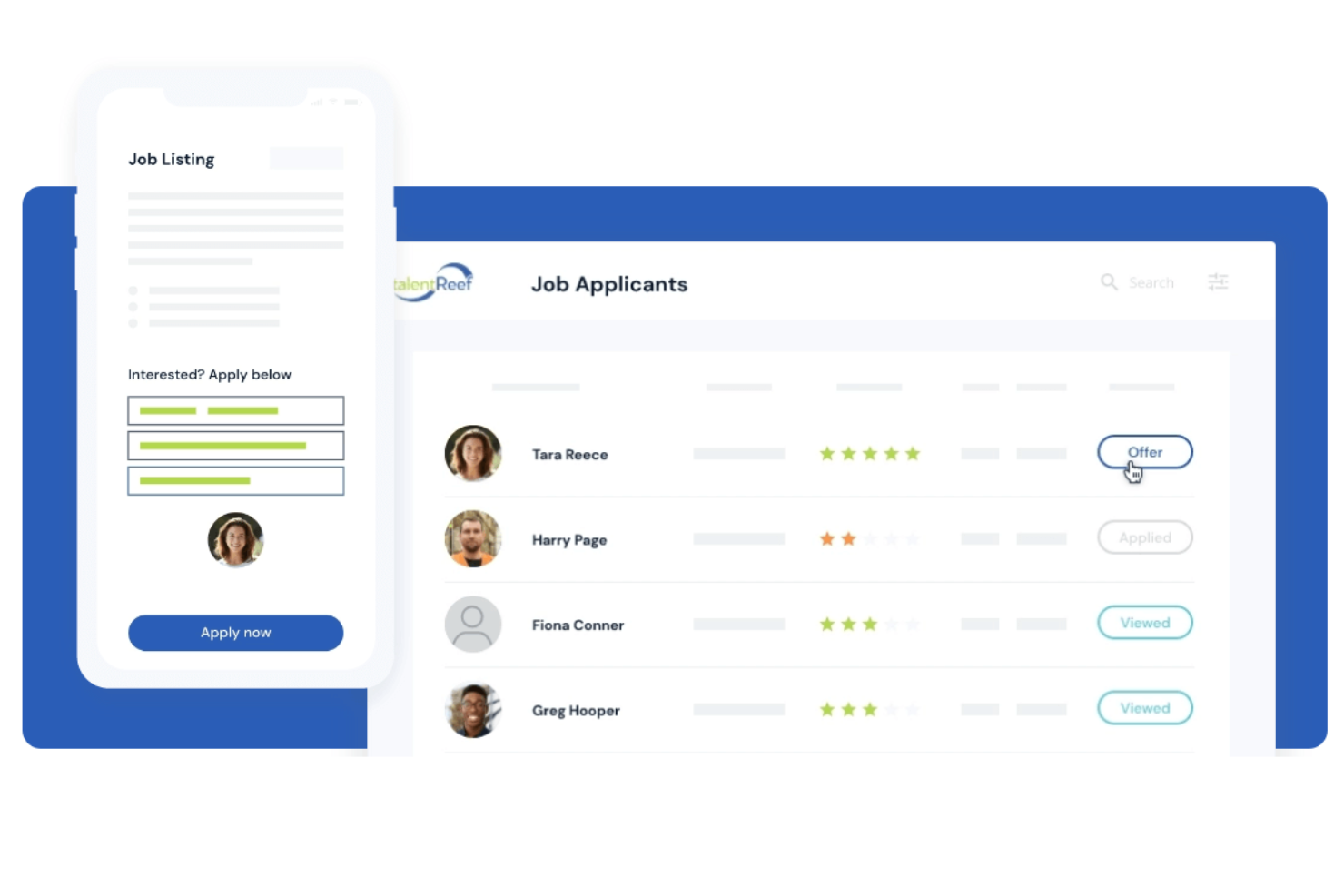10 Best Talent Management Software Shortlist
Here's my pick of the 10 best software from the 20 tools reviewed.
Talk through what you’re looking for. Get a custom shortlist based on your needs. No fees.
The right talent management software can supercharge your HR function.
The right system will help you assess, find, and develop talent to ensure you have the right people in the right roles and that they're engaged and focused.
However, with so many different talent management systems available, finding the best fit for your needs takes time.
As a former HR professional, in this post I'll help you speed up your selection process by sharing my research and insights on the best talent management software for teams of any size.
Why Trust Our Software Reviews
We've been testing and reviewing HR software since 2019. As HR professionals ourselves, we know how critical and difficult it is to make the right decision when selecting software.
We invest in deep research to help our audience make better software purchasing decisions. We've tested more than 2,000 tools for different HR use cases and written over 1,000 comprehensive software reviews. Learn how we stay transparent, and take a look at our software review methodology.
Best Talent Management Software: Pricing Comparison Chart
This comparison chart summarizes pricing details for my top talent management software selections to help you find the best software for your budget and business needs.
| Tool | Best For | Trial Info | Price | ||
|---|---|---|---|---|---|
| 1 | Best for managing global talent in over 150 countries | Free trial + demo available | From $29/month | Website | |
| 2 | Best talent management software for analytics covering the full employee lifecycle | Free demo available | Pricing upon request | Website | |
| 3 | Best for managing global and remote workforces | Free demo available | From $25 - $199/user/month | Website | |
| 4 | Best for linking talent management and performance management processes | Free demo available | From $5 to $10/user/month | Website | |
| 5 | Best for fostering collaborative hiring decisions | Free demo available | Pricing upon request | Website | |
| 6 | Best for configurable performance reviews | Free demo available | Pricing upon request | Website | |
| 7 | Best talent management software for collaborative recruitment | Not available | Pricing available upon request | Website | |
| 8 | Best talent management software for android and iOS mobile apps | 18-day free trial | From $269/month | Website | |
| 9 | Best for onboarding global talent | Free demo available | Pricing upon request | Website | |
| 10 | Best for sourcing, screening, and onboarding top talent | Free demo available | Pricing upon request | Website |
-

ChartHop
Visit WebsiteThis is an aggregated rating for this tool including ratings from Crozdesk users and ratings from other sites.4.3 -

Willo
Visit WebsiteThis is an aggregated rating for this tool including ratings from Crozdesk users and ratings from other sites.4.8 -

Boon
Visit WebsiteThis is an aggregated rating for this tool including ratings from Crozdesk users and ratings from other sites.4.7
Best Talent Management Software Reviews
Here’s a brief description of each talent management platform that made my top 10 list. I’ve included their key features, best use cases, and screenshots to show you their user interface too. Keep reading to find additional bonus picks at the bottom of the list.
Deel is a comprehensive global workforce management software that provides local expertise in over 150 countries. It gives admins a complete overview of their entire workforce no matter where in the world they’re located, and can be used to manage both employees and contractors.
The company can be the employer of record for international employees, and handles both payroll and benefits on your behalf so you don’t need to open up a foreign entity. When you work with contractors, it helps you avoid misclassification and provides legally-reviewed contracts you can use. The company also offers a global mobility service, which can help you with visa sponsorships to bring in candidates from abroad.
The software includes features like contract management, expense reimbursements, and off-cycle adjustments. It integrates with other HR and accounting tools like Ashby, BambooHR, Expensify, Greenhouse, Hibob, Netsuite, Okta, OneLogin, Quickbooks, SCIM, Xero, Workday, and Workable. It also has an Open API that you can use to build custom integrations.
Best talent management software for analytics covering the full employee lifecycle
ClearCompany is a talent management system for better hiring experiences, seamless onboarding, and company-wide goal alignment and performance management. They boast all the features you need to source, onboard, train, and retain the best talent.
Quickly set up 1:1s, including custom scoring tables, weighted sections, and free-form responses; access candidate sourcing, automated screening, grading, and interview scheduling; easily build talent pools compliant with EEO/OFCCP; and more. The ATS, Onboarding, Engagement, Performance Management, and reporting tools can improve HR efficiency and the employee experience
ClearCompany is best for companies based in the U.S. and Canada.
ClearCompany integrates with tools for assessment tests, background checks, calendars, job postings, payroll and benefits, and SSO.
Remofirst is a complete human resources information system (HRIS) that can be used for payroll management and employer of record (EOR) purposes. It's a cloud-based solution that can be used by businesses of all sizes, particularly those that employ remote or global employees and contractors. The software's talent management module provides you with an employee database, performance tracking features, regulatory compliance, and candidate hiring and onboarding tools.
Managers have a complete view of their entire team in the platform, including specific details like people's title or role, location, and salary. All this information is gated according to access permissions set by admins. Payroll can be administered in multiple currencies and employee benefits can be managed, including health insurance and financial benefits. Time-off requests can also be made through the system.
The software can help you maintain compliance with international regulatory standards, tax, and labor laws, and the company's team of support staff can help you uphold employment regulations in over 170 countries. This is especially useful for organizations that want to hire employees and contractors in countries or regions where they have no physical presence or legal entities of their own.
Best for linking talent management and performance management processes
PerformYard is a performance management software that provides flexible features for HR teams to foster an effective talent management system. It gives you the tools you need to build out your talent management strategies, while employees get a streamlined experience so they can focus on quality feedback and effective performance discussions.
With PerformYard, you can customize the software to fit the talent management strategy that’s right for your organization, including 360-degree reviews, project-based reviews, rating scales, continuous feedback, or cascading goals.
PerformYard provides a simple employee experience that facilitates feedback and quality conversations. They provide dedicated customer success managers for every customer to manage their implementation from onboarding to employee training, to ongoing support.
PerformYard integrates with most major HRIS/Payroll systems including ADP, BambooHR, Gusto, Rippling, UKG, Paycom, Workday, and Paylocity.
Greenhouse is a talent management platform designed to help you attract, engage, and hire the best talent for your team. It provides tools for recruiting, candidate management, and onboarding, giving you everything you need to build a more effective hiring process.
One of the reasons Greenhouse stands out as a talent management tool is its focus on structured hiring. You can build customized interview kits, scorecards, and workflows that help your team make consistent, data-driven decisions. This structure ensures that every candidate is evaluated fairly, and the decision-making process remains clear and transparent. It also provides analytics to help you see where your hiring processes can improve, so you can refine them as you go.
Greenhouse also supports a collaborative hiring environment, which allows you to involve multiple stakeholders in the decision-making process. You can gather feedback from your team, create interviewer training, and build interview panels that suit your company’s needs. Its tools also help you plan for better onboarding by setting clear goals for new hires right from the start.
The platform integrates over 500 tools, including BambooHR, BrightHire, Calendly, Checkr, DocuSign, GoodTime, Sterling, Starred, and Spark Hire.
GoCo is an all-in-one HR software platform designed to simplify human resources tasks for businesses across various industries. The tool offers solutions for onboarding, benefits administration, payroll, and compliance, integrating these processes into a single, user-friendly interface. By consolidating essential HR tasks, GoCo helps businesses automate processes, manage employee data, and enhance productivity.
One of the most notable features of GoCo is its comprehensive performance management software. This feature includes fully configurable templates, enabling businesses to design review templates tailored to their specific needs, which facilitates consistent and measurable employee evaluations. The performance management module not only helps the review process but also boosts employee engagement and enhances goal tracking within the company.
I also like GoCo's talent management system that integrates various HR functions, such as onboarding, benefits administration, payroll, and compliance, into a single platform. This integration minimizes the administrative workload and reduces errors due to data consistency across different HR tasks. For instance, GoCo's digital onboarding process automates the collection of required documents for new hires, enrolls them in benefits plans, and adds them to the company payroll with appropriate tax and benefit deductions.
GoCo integrates with a range of third-party tools, including Slack, Microsoft Teams, Zapier, QuickBooks Online, Greenhouse, and Gusto.
Cegid’s Talentsoft platform (formerly Hello Talent) combines the functionality of an employee engagement platform with a talent acquisition and management platform.
Beginning with recruiting, the system encourages collaboration between managers and employees throughout the search for new talent. By using their co-option app, employees can recommend candidate profiles from their personal networks in just a few clicks. To help facilitate recommendations, you can even embed a point system for employee referrals that is customized for your business.
To bolster employee retention, Cegrid designed an intuitive internal mobility tool to help existing employees identify new career opportunities within their organization. Other features also allow teams to promote cross-disciplinary projects to help employees remain proactive in their own skill development.
Best talent management software for android and iOS mobile apps
Used by Starbucks, Toyota, and VICE, Recruitee is a robust, affordable and scalable tool designed to help attract talent, automate recruiting tasks, and decrease time-to-hire. Features include advanced CSS and media options for your customized career site and the ability to post to over 10 free job boards worldwide.
Their open API allows you to integrate Recruitee directly with your pre-existing software and platforms. Therefore, you can add-on tools for chat, project management, or CMS. This scored them highly in the Integrations section of the evaluation outline.
A critique of this tool is that it suffers from some interface issues when it comes to integrating and parsing external documents like PDF CVs, for example, which navigate poorly and require magnification.
FoxHire is an employer of record (EOR) platform that simplifies the process of hiring and managing contractors or full-time employees without requiring companies to handle payroll, compliance, or onboarding themselves. It’s built to help businesses place talent quickly and compliantly, including across multiple states and global markets.
Its fully managed onboarding process covers everything from digital paperwork to timesheet tracking and direct deposit setup. HR support is available throughout the employment lifecycle, assisting with documentation and transitions as needed.
Features include ongoing compliance monitoring, insurance and classification oversight, and centralized workforce management tools for reporting and invoicing. FoxHire doesn’t list integrations with third-party tools, but its all-in-one platform is designed to streamline employment operations in one place.
TalentReef's talent management system is focused on candidate sourcing, hiring, and onboarding. It's purpose-built to help HR teams manage high-volume hiring for location-based hourly roles.
TalentReef's applicant tracking system is designed to make the hiring process as smooth as possible, with features like job posting distribution, resume parsing, and interview scheduling. Once you've determined your successful candidate for each position, you can automatically include them in an onboarding workflow, to help your new hire get up to speed quickly. Their onboarding tools include the ability to automate tasks like paperwork and training, plus the ability to collect legal compliance documents electronically.
TalentReef does have additional features that extend deeper into the employee lifecycle, including performance check-in tools, goal-setting and tracking, and employee evaluation tools too. However, the bulk of their features relate to sourcing and hiring. Other features that make them stand out in this area include text-based recruiting and an integrated CRM (candidate relationship management) system.
Integrations are available with payroll systems, candidate assessment tools, background check providers, and learning management systems, though individual platforms are not specified.
Other Talent Management Software
Here are a few more worthwhile options that didn’t make the top list. I didn’t have room for a full review for each of these but they are still worthy of consideration:
- SAP SuccessFactors
For enterprise-level talent management
- Ascender PeopleStreme
Talent management software for compensation management
- MightyRecruiter
Free talent management software
- Bullseye Engagement
Low cost talent management software
- Oleeo
Talent management software for redeployment and internal mobility
- Lattice
For performance management & 360-degree feedback
- Paylocity
For aligning performance with employee development plans
- hireEZ
Talent management software for diversity and inclusion initiatives
- Zoho Recruit
Executive talent management software
- Peoplebox.ai
For integrated OKRs and performance management
Related HR Software Reviews
If you still haven't found what you're looking for here, check out these other related tools that we've tested and evaluated:
- HR Software
- Payroll Software
- Recruiting Software
- Employer of Record Services
- Applicant Tracking Systems
- Workforce Management Software
Selection Criteria for Talent Management Software
Based on my personal experience trying and researching these tools, I've developed a set of criteria to ensure each platform selected meets specific business needs.
This framework helped me identify the solutions that goes beyond basic requirements to offer additional value through unique features, intuitive usability, smooth onboarding, effective support, and overall value for price.
Here's what I evaluate:
Core Talent Management Software Functionalities (25% of total score): To be considered for inclusion in my list of the best talent management solutions, a platform had to support common use cases including:
- Recruitment and applicant tracking
- Performance management
- Learning and development
- Succession planning
- Compensation and benefits management
Additional Standout Features (25% of total score): To help me find the best software out of numerous available options, I also kept a keen eye out for unique features, including the following:
- Tools that offer innovative learning management systems, integrating with external educational content providers for a wide range of learning opportunities
- Platforms that provide advanced analytics for workforce planning and predictive modeling, going beyond basic reporting functionalities
- Solutions that include AI-driven tools for talent acquisition, such as automated candidate sourcing and screening
- Software that incorporates employee wellness programs, reflecting a holistic approach to talent management
- Platforms offering comprehensive succession planning tools with deep insights into employee potential and readiness
Usability (10% of total score): To evaluate the usability of each system, I considered the following:
- Intuitive interfaces that require minimal training, such as drag-and-drop scheduling for performance reviews
- Role-based access control that is straightforward to configure, ensuring the right level of access for every user
- A clean and modern design aesthetic that enhances user engagement and reduces cognitive load
Onboarding (10% of total score): To get a sense of each software provider's customer onboarding process, I considered the following factors:
- Availability of interactive product tours and chatbots that guide new users through the platform's features
- Comprehensive training materials, including videos and webinars, to facilitate quick mastery of the tool
- Pre-built templates and workflows that help new customers migrate and start realizing value from day one
Customer Support (10% of total score): To evaluate the level of customer support each vendor offered, I considered the following:
- Dedicated account management and responsive customer service teams that are easily accessible via multiple channels
- An extensive knowledge base with articles and FAQs for self-service support
- Proactive outreach from support teams to check on customer satisfaction and offer assistance with new features
Value for Price (10% of total score): To gauge the value of each software, I considered the following factors:
- Competitive pricing structures that offer clear value propositions based on the size and needs of the organization
- Transparent pricing information without the need for sales negotiations
- Flexible plans that scale with business growth and changing requirements
Customer Reviews (10% of total score): Evaluating customer reviews is the final element of my selection process, which helps me understand how well a product performs in the hands of real users. Here are the factors I considered:
- High ratings in areas like ease of use, customer support, and overall satisfaction
- Positive feedback on specific functionalities like the platform's performance management or learning and development capabilities
- Accounts of how the platform has contributed to tangible improvements in talent management outcomes, such as reduced turnover or improved employee engagement
How to Choose Talent Management Software
You know my selection process, but only you know your specific requirements. Or perhaps not!
As you work through your own unique tool selection process, keep the following points in mind:
What problem(s) are you trying to solve?
Start by identifying the challenges you're trying to overcome e.g. accessing employee data, managing candidates through your recruitment process, or conducting meaningful performance reviews.
This will help you clarify the features and functionalities the talent management software needs to provide.
Who will to use it?
To help evaluate cost and requirements, it's important to consider who will use the tool and how many licenses you'll need.
For talent management tools, you'll likely want employee-level access for your entire workforce, with special access for your HR administrators and managers.
Once that's clear, it's also useful to rank the needs of your different users to identify the key priorities for your power users, managers, and employees, to ensure they're all met.
What other tools does it need to work with?
Clarify what tools you're replacing, what tools are staying, and the tools you'll need to integrate with.
You'll need to decide if the tools will need to integrate together or, alternatively, if you can replace multiple tools with an all-in-one talent management tool.
Can the ATS scale with you?
Consider your long-term hiring needs and look for a system with flexible plans that allow for expansion as your business scales.
If you plan to hire globally, the system should support multi-country compliance, language localization, and international job postings.
Trends in Talent Management Software for 2025
Talent management software continues to evolve rapidly, driven by changing workforce dynamics, technological advancements, and organizational needs.
This evolution is reflected in recent product updates, press releases, and release logs from the most dynamic and popular tools in the market.
Below, I explore these trends, focusing on what they mean for HR professionals seeking to navigate the complex terrain of talent management effectively.
Integration of AI and Machine Learning
AI-driven analytics and machine learning algorithms are increasingly being incorporated to predict employee turnover, identify high-potential employees, and personalize learning and development plans.
This trend highlights the growing need for predictive insights and personalized management strategies in talent management.
Focus on Employee Well-being and Engagement
There's a noticeable shift towards software that includes features for monitoring and promoting employee well-being and engagement.
Tools are being developed to offer wellness programs, real-time feedback mechanisms, and engagement surveys, reflecting the critical role of mental health and employee satisfaction in retention and productivity.
Enhanced Learning and Development Platforms
The rapid evolution of learning and development features within talent management software points to an increased focus on continuous skill development and career progression.
This includes the integration of external educational content, microlearning modules, and career pathing tools, underscoring the importance of growth opportunities in talent retention.
Advanced Workforce Analytics
The expansion of workforce analytics features, with deeper insights into performance metrics, skill gaps, and succession planning, signals the need for data-driven decision-making in HR practices.
These analytics help in aligning workforce strategies with business objectives, indicating a trend towards more strategic HR management.
What is Talent Management Software?
A Talent Management System (TMS) is a software tool that helps companies attract, develop, and retain the talent needed to achieve continued success.
These systems streamline everything from hiring and onboarding to performance reviews, learning, and career growth.
The goal is to make HR processes smoother and more holistic, reduce turnover, and ensure the right people are in the right roles.
They solve problems like clunky hiring, unorganized training, and employees feeling stuck or disengaged.
Features of Talent Management Software
Talent management software is a relatively broad category with hundreds of vendors focusing on the same things in different ways.
Here are some of the top features that I look for when researching these platforms:
- Applicant Tracking System (ATS) – Helps manage job postings, applications, and candidate screening, making hiring faster and more organized.
- Onboarding Tools – Streamlines new hire paperwork completion, training, and introductions so employees feel welcomed and productive sooner.
- Performance Management – Tools to track goals, capture feedback, and conduct reviews to keep employees motivated and aligned with company objectives.
- Learning & Development – Offers training courses and career development plans to help employees grow and stay engaged.
- Succession Planning – Features to help identify high potential people and future leaders, reducing the risk of key positions being left unfilled.
- Analytics & Reporting – Dashboard and reports providng valuable insights on hiring trends, employee performance, and turnover to support better decision-making.
Benefits of Talent Management Software
Talent management software can automate and streamline various HR processes, providing significant benefits for users and organizations alike.
Here are five key benefits of implementing these solutions:
- Enhanced recruitment efficiency: Talent management software significantly speeds up the hiring process by automating job postings, applicant tracking, and candidate screening.
- Streamlined onboarding process: A smooth and organized onboarding experience helps new hires integrate into the company culture and start contributing faster. Talent management platforms facilitate this by providing checklists, training schedules, and progress tracking, making the transition seamless for both the employee and the employer.
- Improved performance management: Continuous feedback and performance assessments are simplified with talent management software. This functionality supports the development of a performance-driven culture by making it easier to set goals, track progress, and provide timely feedback, leading to increased employee productivity and job satisfaction.
- Targeted learning and development: These platforms offer personalized learning paths and development plans that cater to the individual needs of employees. By aligning employee growth with organizational goals, businesses can ensure they are effectively developing their workforce for current and future challenges.
- Strategic talent retention: By analyzing data on employee performance, satisfaction, and engagement, talent management software helps identify at-risk employees and address issues before they lead to turnover. This proactive approach to retention saves costs related to hiring and training new employees and preserves institutional knowledge.
Costs & Pricing for Talent Management Software
Talent management software tends to have a variety of plans and pricing options available depending on its function and the additional features it offers to meet the needs of different companies.
Different plans cater to varying business sizes, needs, and budgets, making it essential to select one that aligns with your organizational goals and requirements.
Plan Comparison Table for Talent Management Software
Below is a table that outlines the pricing and plan structures commonly found in talent management software, designed to help you navigate your options.
| Plan Type | Average Price | Common Features |
|---|---|---|
| Free | $0 | Basic talent acquisition, limited performance management, self-service portals |
| Basic | $4-7 per user/month | Recruitment and onboarding, basic performance, and learning management |
| Professional | $10-20 per user/month | Enhanced performance management, learning and development modules, and analytics |
| Enterprise | Custom pricing | Advanced analytics, succession planning, custom integrations, and dedicated support |
When considering which plan to choose, it's important to evaluate both the current and future needs of your organization.
Keep in mind that while higher-tier plans offer more features and flexibility, they also come with a higher cost.
Balancing functionality with budget will guide you to the most suitable option for your organization.
New And Noteworthy Product Updates 2025
The better vendors listen to their customers to release new improvements. Below, I've summarized some of the recent recent product updates from my top talent management system recommendations.
Learn what’s new, if it’s hot—or not, and why it matters for talent management.
2025 Q1 TMS Software Updates
Deel product update notes
In January 2025, Deel introduced several updates to enhance user control, compliance, and transparency within its platform.
These improvements focus on streamlining administrative processes, improving tax form generation, and providing greater visibility into employee compensation.
Key updates:
- Empower Workers to Request Changes with Approval: Employees can now submit requests to update their personal information directly through Deel, with an approval process in place to ensure data accuracy and compliance.
- Easily Generate and Share Year-End W-2/W-3 Forms: Deel has simplified the process of generating and distributing W-2 and W-3 tax forms, reducing administrative workload and ensuring timely tax compliance.
- Gain Full Visibility with the New Compensation Profile: The new compensation profile provides a centralized view of salary, bonuses, and benefits, making it easier for employers and employees to track total compensation.
Verdict: Warm! These updates add useful administrative and compliance tools, improving efficiency and transparency. While not groundbreaking, they offer meaningful enhancements for businesses managing a global workforce.
Greenhouse product update notes
In February 2025, Greenhouse introduced several updates aimed at enhancing the recruitment process through automation, improved candidate filtering, and expanded integrations.
Key Updates:
- AI-Powered Interview Questions: Leveraging artificial intelligence, this feature generates interview questions based on job descriptions and titles, streamlining the preparation process for recruiters.
- New Filter Options in Talent Filtering: Enhanced filtering capabilities allow recruiters to exclude candidates based on specific keywords in resumes and remove those previously rejected for a job, refining candidate searches.
- Integrations: Greenhouse expanded its integration ecosystem to include tools like Nexxt Candidate Search for sourcing candidates and EngineRay for AI-proctored assessments, enhancing the platform's versatility.
Verdict: Warm! These updates provide valuable enhancements to the recruitment workflow, offering improved automation, candidate filtering, and integration capabilities. While not revolutionary, they contribute positively to the efficiency and effectiveness of hiring processes.
Need expert help selecting the right Talent Management Software?
If you’re struggling to choose the right software, let us help you. Just share your needs in the form below and you’ll get free access to our dedicated software advisors who match and connect you with the best vendors for your needs.


